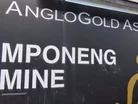[PHOTOS] 5 of the most staggering facts about the Mponeng Gold Mine

1. Mponeng is as deep as 10 Empire State Buildings
As the world’s deepest manmade hole, the depth of the Mponeng Gold Mine is almost mythical. Located south-west of Johannesburg in South Africa, the mine descends 2.5 miles below the Earth’s surface—enough to stack 10 Empire State Buildings on top of each other. This doesn’t include the 236 miles of tunnels throughout the mine, which is longer than the New York subway.


2. 4,000 workers descend into the mine each day
Owned and operated by AngloGold Ashanti, approximately 4,000 miners take the plunge each and every day to work underground at Mponeng. To access the mine, workers board an elevator shaft – “cage” – that fits 120 people at a time, which then travels to the first stage of the mine located 1.6 mile below the Earth. A second elevator takes workers even deeper, while the last part of the mine is only accessible by foot or vehicle.


• Related content: [PHOTOS] From mine to tourist attraction: 6 innovative reclamation projects


3. Ice has to be pumped down to cool the tunnels
Nearing the center of the Earth, temperatures reach as high as 140 degrees Fahrenheit inside Mponeng. To combat this, and keep the heat from literally cooking workers, the company pumps an ice-slurry mixed with salt down from the surface, using fans to blow the air over the ice, creating its own internal weather system inside the mine.


4. Ghost miners exist in Mponeng
Believe it or not, illegal miners are known to sneak into mineshafts at Mponeng and hide out for months--turning ghostly white in the process—in order to steal gold. This is a fact!


(source: The Guardian)
5. A new ecosystem was discovered
Ever heard of Desulforudis audaxviator? Well, it’s a monotypic bacterium that has only been found in water samples obtained underground in the Mponeng Gold Mine. The bacterium, which lives in depths from .9 to 1.8 miles below the Earth’s surface in ground water, is one of the only few organisms known to man that doesn’t not require sunlight for nourishment.

Stay connected! Follow us on Twitter and like us on Facebook
Check out the latest edition of Mining Global



